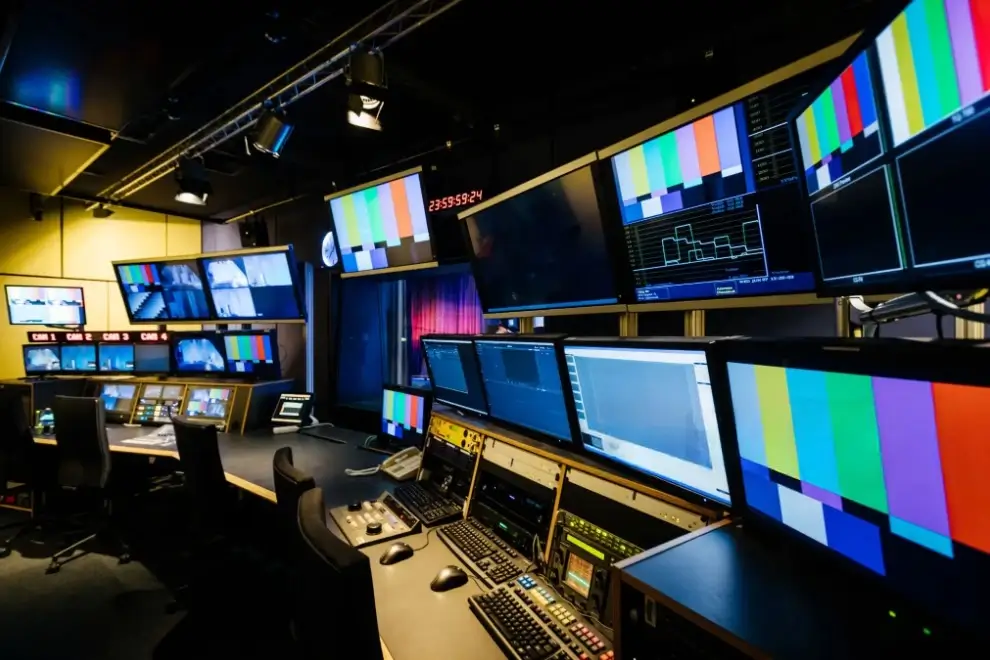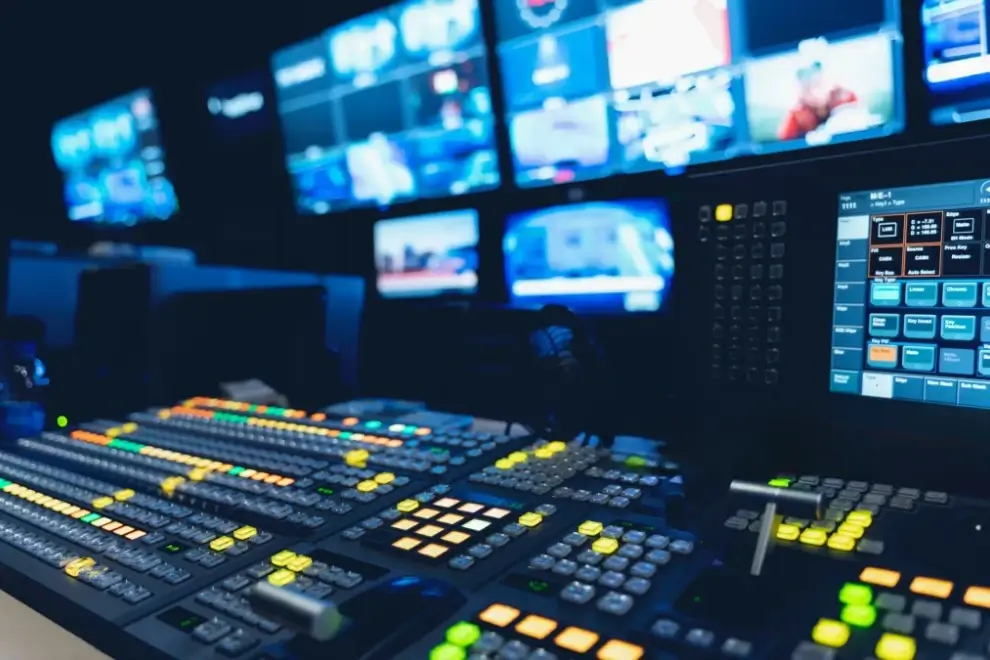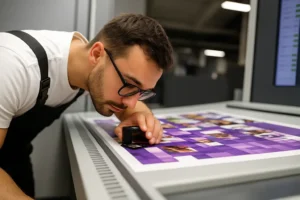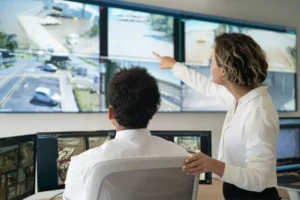As a control room console manufacturer, we’ve seen firsthand how the broadcast control room has evolved into one of the most critical spaces in modern media production. In 2025, it’s more than just a hub for live switching and audio mixing—it’s the operational core where every decision, cue, and correction comes together in real time. Whether it’s for news, sports, streaming, or corporate video, today’s control rooms demand thoughtful design, ergonomic workstations, and rock-solid infrastructure. This guide walks you through everything we’ve learned from the ground up—what makes a BCR function at its best and how the right console setup can make all the difference.
So, What Exactly Is a Broadcast Control Room?
If you’ve ever stepped into the world of TV or radio production, you know there’s a lot going on behind the scenes. At the center of it all is the broadcast control room—or BCR for short. You might also hear it called a production control room (PCR) or studio control room (SCR). Different names, same idea: it’s where all the real-time decisions happen during a broadcast.
From my experience designing and building control consoles, I can tell you this space is where your team pulls together camera feeds, manages audio, adds graphics, and makes sure everything looks and sounds right before it reaches the audience. It’s basically the broadcast brain.
You’ve got your director calling the shots, the technical director operating the switcher (also known as the vision mixer), audio engineers balancing sound, and graphics operators queuing up visuals. Everyone’s working in sync to make the broadcast run smoothly—and a well-designed control room setup is what makes that possible.
What Does the Broadcast Control Room Actually Do?
Here’s a quick rundown of what’s happening behind those screens:
- Program Composition – The team decides which camera angle to cut to, when to overlay a graphic, and how to balance music, dialogue, or ambient sound. It’s all about flow and timing.
- Crew Communication – Everyone in the control room needs to stay in constant contact. We’re talking intercoms and headsets, all wired (or wireless) for fast, clear communication.
- Live Monitoring & Quality Control – This is where feeds are constantly watched and adjusted to meet technical standards—video resolution, sound clarity, signal timing, and compliance.
From the console side of things, we make sure every role has the tools and visibility they need to make these jobs easier and more efficient.

What’s the Layout of a Broadcast Control Room Like?
The layout in the broadcast control room is important. It is crucial to the efficiency of live productions. According to a study on control room design, the seating arrangement and positioning of critical roles, such as the director and technical director, are designed to maximize visibility and communication (Ainsworth, 2017) source: Sage Journals. This layout enables quick decision-making, which is especially important during live news or sports broadcasting where every second counts.
Also, when we’re working with clients on layout design, our goal is to support how people actually use the space—not just where the gear fits. That means thinking about sightlines, communication, and quick access to equipment.
The Core Setup
At the front of the room, you’ll usually see a monitor wall—a big bank of screens showing every camera feed, live output, and sometimes remote sources too. This is the team’s visual dashboard.
Just below that is the main console area. Right at the center? The director. Next to them, the technical director runs the video switcher, moving between feeds and managing transitions. Off to the side, you’ll find audio engineers with their own mixing consoles. Graphics and replay operators sit nearby, and producers often take the far left side to monitor overall flow.
Typical Seating Arrangement
This varies slightly, but here’s a common setup we’ve helped implement:
- Far Left: Executive producer, producer
- Left of Center: Script supervisor or production assistant
- Center: Director
- Right of Center: Technical director (vision mixer)
- Far Right / Back Row: Graphics, replay, teleprompter ops
- Room Periphery: Studio manager or liaison to the studio floor
This layout isn’t just about comfort—it’s about efficiency. When things get intense (think: live news or sports), you need to be able to respond in seconds.
Supporting Infrastructure
Along the walls, you’ll see racks filled with processing gear—camera control units, media servers, routing systems. Climate control, power backup, and soundproofing are critical. One power surge or loud distraction can throw off an entire segment, so we design the furniture and console systems to help manage those risks.
What Are the Real Requirements of a BCR?
Over the years, we’ve seen a wide range of setups—from small mobile units to sprawling multi-room broadcast hubs. But certain requirements show up across the board:
1. Technical Infrastructure
You need the basics—video switchers, audio mixers, character generators. Beyond that, signal routers, digital video effects (DVEs), media servers, and control software make it all run smoothly.
2. Ergonomics and Workflow
People spend long hours in these rooms. That’s why adjustable consoles, comfortable seating, and minimal cable clutter are non-negotiables. Everyone should be able to see the monitor wall clearly and reach their tools without stretching. The critical role of ergonomics in optimizing these tasks has been highlighted in ergonomic research, underscoring the importance of comfortable, well-designed workstations for reducing operator fatigue and improving performance in broadcast control rooms (Shannon et al., 2018) source: Engineering Purdue.
3. Environmental Considerations
- Room Size: Enough space for people and gear now—with room to grow.
- Cooling & Power: Broadcast gear gets hot. Reliable HVAC and redundant power protect the equipment and your uptime.
- Soundproofing: Keeps distractions out and communication crisp.
4. Operational Efficiency
Everything in the room needs to support real-time action—whether that’s switching feeds, inserting graphics, or calling cues. That’s why we always recommend rock-solid intercom systems and fast-response equipment.
5. Compliance and Reliability
This part isn’t flashy, but it matters. Broadcasters need to meet regulatory standards. That means monitoring and logging your feeds 24/7 to prove you’re within the rules.

Key Features That Set a Great Broadcast Control Room Apart
You can tell when a control room is well-designed—everything just works better. These are the features we make sure to support in our console builds:
- Monitor Wall / Multiviewers – For quick, visual access to multiple feeds.
- Video Switchers – At the core of live production, switching between feeds and applying effects.
- Audio Consoles – Balancing multiple inputs for clarity.
- Graphics Systems – For everything from lower-thirds to full-screen overlays.
- Waveform Monitors / Vectorscopes – To check technical signal quality.
- Routing Systems – Flexible enough to handle lots of inputs and destinations.
- Communication (IFB and Intercoms) – For coordination between studio and control room.
- Redundancy Systems – Fail-safes in case something goes wrong mid-broadcast.
The Equipment You’ll Find in a Broadcast Control Room
Here’s a quick checklist of the gear we see in most control rooms, and often build console systems around:
Video
- Vision Mixer / Video Switcher
- Multiviewer Displays
- Replay Servers (especially in sports)
Audio
- Mixing Console
- Audio Embedders / De-Embedders (to manage sync)
Graphics
- Character Generator
- Media Servers / Still Stores (for playback)
Signal & Monitoring
- Routing Switchers
- Waveform Monitors
- Test Pattern Generators
We design each station to support these tools—everything from rack space to monitor placement to integrated cable paths.
Where is the Broadcast Control Room Used?
It’s not just TV stations using these rooms anymore. Control rooms support a wide range of live production environments:
- Sports Broadcasting – Multiple cameras, replays, live graphics.
- News Studios – Live feeds, remote interviews, breaking news.
- Studio Entertainment – Game shows, variety, music specials.
- Corporate Video & Education – Webinars, e-learning, live events.
- Remote Production (REMI) – Gear’s off-site, but production happens in a central control room.
- Multi-Platform Streaming – Content for TV, web, and social media—all from the same room.
In every case, the control room is the center of gravity—where decisions are made and live content is managed.
Final
Whether you’re producing a national newscast or a local college football game, the control room is what holds it all together. And from where I stand—as someone who helps design and build these workspaces—the layout, gear, and workflow matter just as much as the content itself.
Design it right, and the crew can focus on the creative side. Design it wrong, and even the best talent in the world will be held back. In 2025, with more platforms, more live events, and more pressure than ever, a reliable, ergonomic, and future-ready broadcast control room isn’t a luxury—it’s a necessity.


